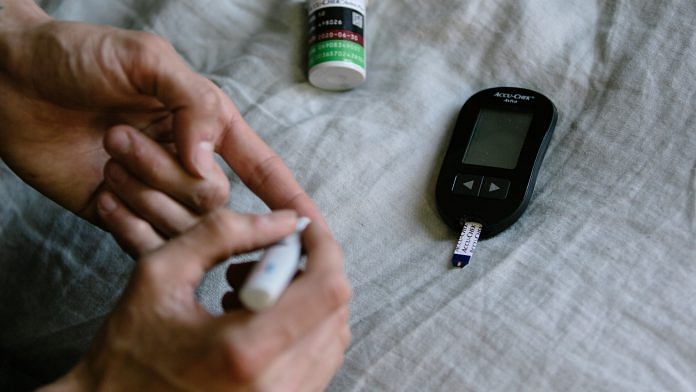- 1 in 11 people worldwide lives with diabetes, which causes 1.5 million deaths worldwide each year.
- A new study has discovered that standing up during long periods of sitting can reduce the chances of developing type 2 diabetes, even if someone is overweight.
- The UN’s Sustainable Development Goal number 3 targets a one-third reduction in deaths attributable to noncommunicable diseases, by 2030.
It’s time to take a stand against chronic lifestyle diseases… literally. Standing can help prevent serious health conditions like type 2 diabetes, new research suggests.
Scientists from Finland’s Turku PET Centre and UKK Institute have discovered a link between standing and better insulin sensitivity.
Insulin helps regulate body metabolism and blood sugar levels. But factors like being overweight can disturb how the body’s insulin hormone functions, leading to a reduction in insulin sensitivity and an increased risk of developing chronic conditions like type 2 diabetes.
People with diabetes are susceptible to complications like stroke, blindness, kidney failure and heart disease, and at increased risk of premature death. One in 11 people worldwide lives with the disease, which causes 1.5 million deaths worldwide each year.
Standing improves insulin production
While it’s no secret that physical exercise can help with diabetes and other noncommunicable diseases, the study in Finland was unusual in that it looked closely at how periods of inactivity impact insulin production.
The findings, published in the Journal of Science and Medicine in Sport, found that when study participants interrupted long periods of sitting by standing up, their insulin function improved, even for inactive adults at higher risk of developing type 2 diabetes. Standing improved insulin regardless of how long a participant sat, their activity and fitness levels, or whether they were overweight.
“This association has not been shown before,” Taru Garthwaite, one of the study’s authors, told Science Daily. “These findings further encourage replacing a part of daily sitting time with standing, especially if physical activity recommendations are not met.”
A worldwide problem
Noncommunicable diseases (NCDs) like diabetes, heart disease, cancer, stroke and chronic lung diseases are a growing problem worldwide. So much so that the United Nations’ Sustainable Development Goal (SDG) number three targets a one-third reduction in premature deaths from noncommunicable diseases by 2030.
These lifestyle-related conditions kill 41 million people – more than 70% of deaths worldwide – each year, according to the World Health Organization (WHO). More than two-thirds of these deaths are in low- and middle-income countries, which emphasizes the link between poverty and lifestyle-linked diseases.
Lack of physical exercise is one of four long-term key risk factors, alongside unhealthy diet, exposure to tobacco smoke and excessive alcohol use. Inactivity or taking insufficient exercise causes an estimated 1.6 million deaths annually.
Also read: Steroid use, diabetes among 5 reasons why India has 71% of world’s black fungus cases: Study
What’s the solution?
The WHO advises people to change the unhealthy lifestyle choices that lead to the development of NDCs.
Detection, screening and treatment programmes are a vital part of managing NDCs, yet access to healthcare is limited for many people in low- and middle-income countries.
While there is no single solution to ensure greater access to global healthcare systems, policy initiatives like the WHO’s Global Coordination Mechanism on the prevention and control of NDCs, provide a building block for collaboration to help combat this growing problem.
What’s the solution?
The WHO advises people to change the unhealthy lifestyle choices that lead to the development of NDCs.
Detection, screening and treatment programmes are a vital part of managing NDCs, yet access to healthcare is limited for many people in low- and middle-income countries.
While there is no single solution to ensure greater access to global healthcare systems, policy initiatives like the WHO’s Global Coordination Mechanism on the prevention and control of NDCs, provide a building block for collaboration to help combat this growing problem.
Johnny Wood, Writer, Formative Content
This article was originally published on the World Economic Forum (WEF).
Also read: Alzheimer’s to anxiety, poor gut health has major say



